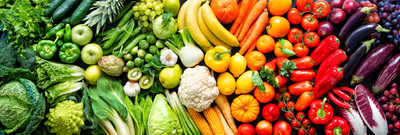The Inverse Relationship of Vegetable Nutrition vs. Yield
Jul 24th 2024
According to research, produce in the U.S. not only tastes worse than it did in your grandparents' days, but also contains fewer nutrients. In fact, the average vegetable found in today's supermarket is anywhere from 5 percent to 40 percent lower in minerals such as magnesium, iron, calcium and zinc than those harvested just 50 years ago.
Today's vegetables are larger, but do not contain more nutrients. Jumbo-sized produce actually contains more "dry matter" than anything else, which dilutes mineral concentrations.
An additional problem is the "genetic dilution effect," in which selective breeding to increase crop yield has led to declines in protein, amino acids, and minerals. Breeders select for high yield, effectively selecting mostly for high carbohydrate content.
And finally, as a result of the growing rise of chemical fertilizers and pesticides, modern crops are being harvested faster than ever before, meaning that produce has less time to absorb nutrients either from synthesis or the soil.
If you are looking to re-energize your foods, consider the Food and Liquid Energizer.
From the Hort Science:
Three kinds of evidence point toward declines of some nutrients in fruits and vegetables available in the United States and the United Kingdom:
1) early studies of fertilization found inverse relationships between crop yield and mineral concentrations—the widely cited “dilution effect”;
2) three recent studies of historical food composition data found apparent median declines of 5% to 40% or more in some minerals in groups of vegetables and perhaps fruits; one study also evaluated vitamins and protein with similar results;
and 3) recent side-by-side plantings of low- and high-yield cultivars of broccoli and grains found consistently negative correlations between yield and concentrations of minerals and protein, a newly recognized genetic dilution effect.
Studies of historical food composition data are inherently limited, but the other methods can focus on single crops of any kind, can include any nutrient of interest, and can be carefully controlled. They can also test proposed methods to minimize or overcome the diluting effects of yield whether by environmental means or by plant breeding.
Sources: Time February 17, 2009 & The Journal of Hort Science February 1, 2009

